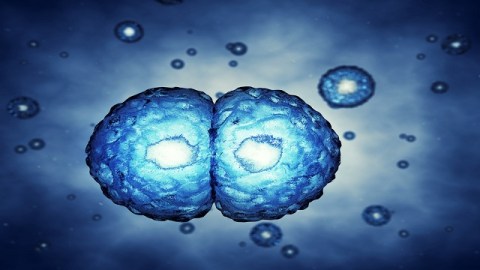The Promise of iPS

Earlier this week, the Nobel Prize for Medicine was awarded to John B. Gurdon and Shinya Yamanaka for their pioneering work in cell reprogramming. The decision was not without controversy. Since Gurdon’s early work was used as the basis for cloning projects (including Dolly the sheep), cell reprogramming, or pluripotent stem cells (iPS) technology, has been viewed with quite a bit of suspicion and fear.
Of course, much of that fear is rooted in a future that is far, far away from now. The science fiction version of cell reprogamming has us cloning ourselves (and maybe our pets), “designing” our babies and generally defying nature. And while many have talked about potential stem cell therapies, like replacing neurons in the substantia nigras of individuals with Parkinson’s disease, we aren’t there–and aren’t likely to be there for a long, long time. There’s still quite a bit of work to be done–and a lot of ethical considerations to be hashed out–before those kinds of programs are realized.
But, for me, the real promise of iPS, at this juncture, is to be able to better model neuropsychiatric disease–and test personalized treatments for those disorders.
Let me give you an example. When Shinya Yamanaka first transformed a skin cell into a stem cell back in 2006 by altering 4 genes, he inspired thousands of other researchers to embark on similar projects. One of his colleagues at the Gladstone Institute, Yadong Huang, took the idea and ran with it–managing to turn a skin cell into a neuron by simply changing one gene, Sox2. And with just one factor at play, Huang’s group can reprogram cells with “zero tumor formation”–an issue that many other reprogramming techniques have.
Huang says that, ideally, one day, we might be able to replace cells obliterated by Alzheimer’s disease. “Scientists like myself are very careful about talking about this. We know the brain is very different from other organs and there are many hurdles that must be overcome before we can begin to talk about using stem cell therapy in the brain,” he said. And he’s right.
But that doesn’t mean iPS is not valuable now. Huang and other researchers are using these iPS cells to better understand the molecular mechanics of many neuropsychiatric disorders like Alzheimer’s.
“Many of the cell culture studies done in Alzheimer’s research do not involve human neurons,” he told me. “It’s hard to get human neurons. Sometimes you can get some after brain surgery. But it’s just a small piece and you are taking that piece from someone with damage to the brain. This technique allows us to really study human neurons in culture and see if we can replicate many of the studies that are currently conducted in animal models.”
Furthermore, these generated, living neural networks may help clinicians understand which treatments are best for individual patients. More and more, neuroscientists are learning that neuropsychiatric disorders are not single diseases but collections of various rare genetic disorders. One drug will not fit all. Huang can imagine a future where a patient donates a few skin cells in order to determine which drug is best for their version of the disease. “This is something that will help us make sure that we are giving patients safe, effective drugs in the future.”
Even without scientists running to inject stem cells into our brains, Gurdon and Yamanaka’s win is an exciting coup for medicine. And I’m excited to see what the real, as opposed to the imagined, future of iPS will bring to the table.
Photo Credit: nobeastsofierce/Shutterstock.com





